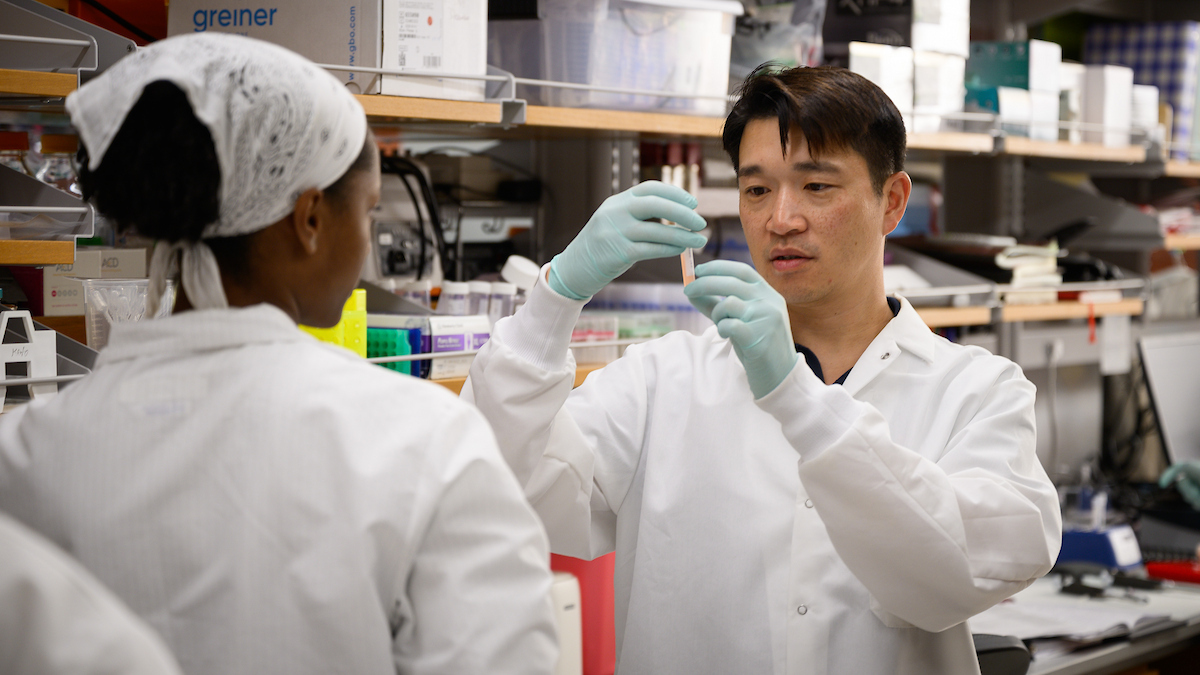Down on the Farm at NC State University College of Veterinary Medicine
[section_title] [/section_title]
[/section_title]
Managed by Dr. Dennis Wages, the Teaching Animal Unit, or TAU, is a working farm on about 80acres of the 180-acre  CVM campus. Located a few yards from classrooms and lecture halls and minutes from downtown Raleigh, the facility serves as a teaching laboratory for students to learn husbandry, production management, and routine procedures used in livestock production.
CVM campus. Located a few yards from classrooms and lecture halls and minutes from downtown Raleigh, the facility serves as a teaching laboratory for students to learn husbandry, production management, and routine procedures used in livestock production.
TAU staff and residents in the Department of Population Health and Pathobiology are involved in preparing DVM students who participate in laboratory training during years one through three and then senior rotation visits during the fourth year of the professional curriculum. Techniques students learn through the TAU herds and flocks include handling and restraint, using head gates, blood collection, injection sites, body condition scoring, breeding and birthing, freezebranding, foot trims, nutrition, pregnancy checks and physical exams.
The Beef Unit consists of 16 Angus brood cows with their calves and seven replacement heifers. Artificial insemination is used to breed in the spring and the Angus cows calve in the winter.
The Dairy Unit consists of 14 to 18 milking cows that are milked twice a day and six to eight replacement heifers. As the dairy cows calve, the calves are placed in hutches and are hand milk fed. After two months, the hutch calves are weaned off of milk and put into a pasture to grow as a replacement heifer.
The Small Ruminant Unit consists of some 20 sheep and 20 goats that are bred in the fall anddeliver lambs and kids February through March.
The Swine Unit consist of a gestation barn, which houses 25 to 34 sows and several boars used for breeding, a farrowing house, which can house up to seven sows for farrowing, a nursery barn, which contains six pens, and a finisher barn that has three individual rooms that contain four pens in each.
Swine gestation is three months, three weeks and three days. Once the sows farrow, the piglets are given injectable vitamins and antibiotics and processed. When the piglets are to three to four weeks old, they are moved into the nursery. Some four to five weeks later, they are moved into a finisher barn. Once they get to weight (210-240 lbs), they are shipped to market.
In the spring, the TAU contracts with a commercial poultry operation to house and raise some 5,000 chickens. Day-old chicks are delivered in February, raised for seven weeks, and then shipped for processing. In the fall, the process repeats itself with turkeys; a commercial operation delivers some 2,000 day-old poults in September that are raised for 14 weeks before being shipped for processing.
The Equine Unit consist of four to six brood mares, 15 teaching horses, one stallion, and a gelding that is employed in anatomy labs for students to identify the bone and muscle structures of the horse. Students have the responsibility to foal out the brood mares, and then imprint and halter train the foals. Once the foals are weaned they are sold under a sealed bid.
Additional Information:
The Role of the Teaching Animal Unit at NC State College of Veterinary Medicine


